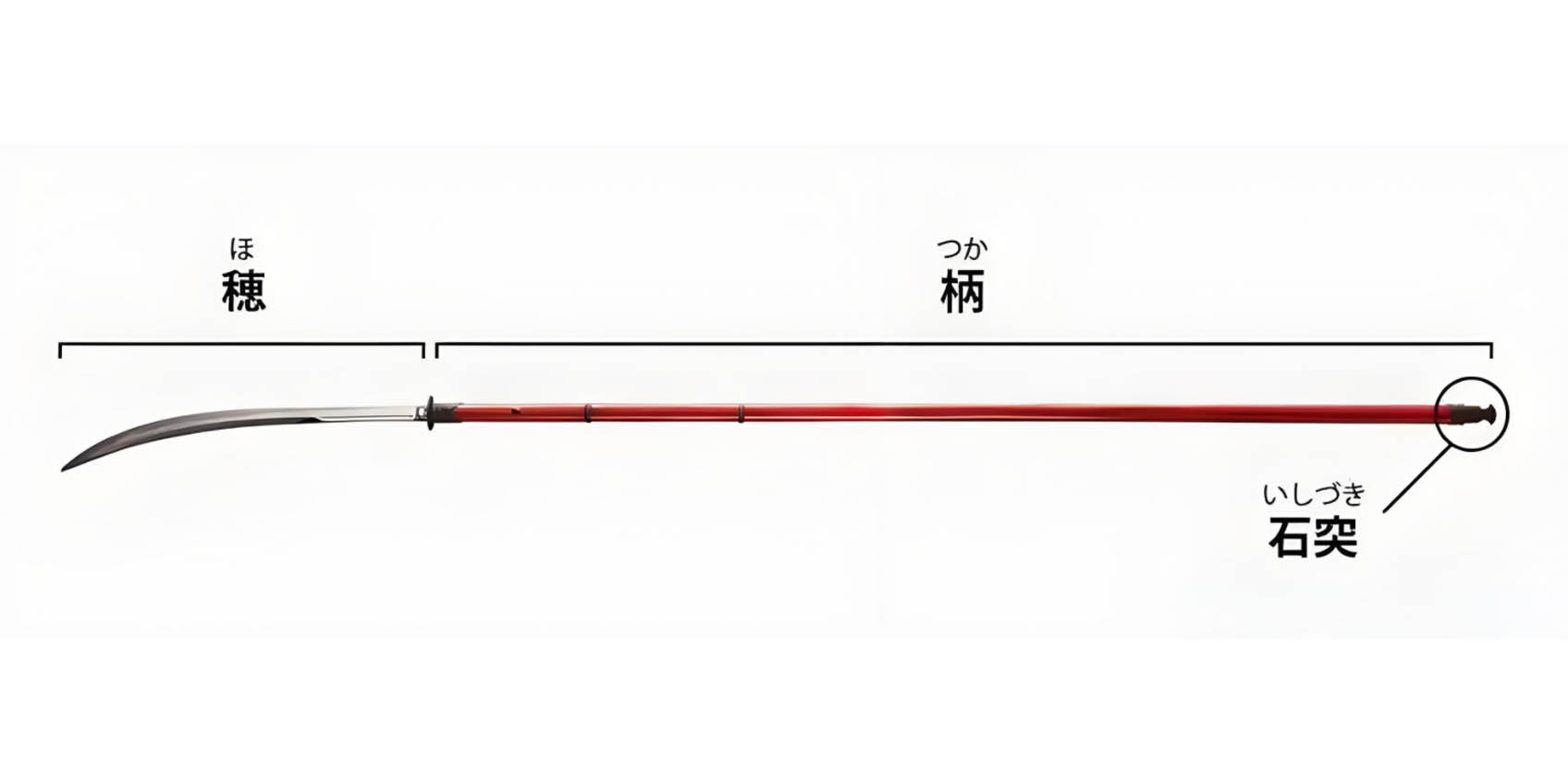Exploring the Naginata Sword:A Dive into History, Design, and Practice

Exploring the Naginata Sword:A Dive into History, Design, and Practice
The Naginata is a unique Japanese weapon characterized by its long handle, combining features of both a sword and a spear. It originated during the Nara to Heian period, initially used by warrior monks to protect temples. Over time, the Naginata became a primary weapon on the battlefield during the Kamakura to Muromachi periods. However, during the Onin War, it gradually fell out of favor due to its unsuitability for close-quarters combat, being replaced by firearms.
In the Edo period, the Japanese shogunate briefly prohibited samurai from carrying Naginatas. Although this ban affected the 'O-naginata,' the Naginata remained an essential martial art for women in samurai families, leading to the emergence of a specialized discipline known as '女子薙刀' (women's Naginata). During the Taisho era to post-war period, Naginata practice, referred to as 'なぎなた,' flourished, becoming a recognized competitive sport.
The Shape and Design of the Naginata
The standard blade length of a Naginata is typically about one shaku (approximately 30 to 60 cm), but variations can reach up to three shaku (about 90 cm). The blade usually features a short blood groove, and its shape can vary, commonly being of the crown drop or iris style. The handle typically measures between three to six shaku (about 90 to 180 cm), with the blade often sheathed for protection.
The forging process and shape of the Naginata share similarities with the Katana. Its design combines the flexibility of a sword with the striking range of a polearm, making it widely used by samurai, foot soldiers (ashigaru), warrior monks (sohei), and noble female warriors (jo).
Modern Naginata and Competitions
Today, the Naginata attracts an increasing number of practitioners as a traditional martial art. It is not only prevalent in Japan but has also begun to gain international popularity. Naginata competitions are emerging in various martial arts events, particularly the All Japan Naginata Championships, showcasing a vibrant competitive spirit and traditional techniques.
The modern Naginata is not just a practical weapon but also a form of martial arts rich in historical culture, embodying the charm of traditional Japanese martial arts. Through continuous evolution and development, the Naginata has become a common pursuit for martial arts enthusiasts and history lovers alike. Whether in the arena or during daily training, the Naginata provides a unique window into exploring Japanese traditional culture.
1. Competition Rules and Formats
Modern Naginata competitions typically adopt a “combat-style” format, where practitioners showcase their skills and strategies. Matches are generally divided into individual and team formats. In individual matches, competitors engage in one-on-one battles, with victory determined by point assessment. Team matches usually consist of several practitioners forming a team, with their collective performance deciding the overall outcome.
2. Scoring System
The scoring system in modern Naginata competitions is relatively scientific, evaluating not only the accuracy of attacks but also the elegance of techniques, the power of strikes, and defensive responses. Judges are typically experienced martial arts experts who assess competitors' performances to ensure fairness and objectivity in scoring.
3. Techniques and Tactics
Competitors must exhibit a variety of techniques, including thrusting, slashing, and blocking. Modern Naginata competitions emphasize technical diversity and flexibility, requiring practitioners to adapt their strategies based on their opponents’ movements. Additionally, traditional techniques such as 'stepping' and 'dodging' are utilized to evade opponents’ attacks, increasing the chances of victory.
4. Equipment and Safety
In modern Naginata competitions, participants are required to wear specialized protective gear to ensure safety during matches. This equipment includes chest guards, hand guards, and helmets. The Naginata used in competitions is also specially designed, often made from lightweight materials to reduce the burden on competitors and enhance safety.
5. Internationalization and Popularization
With the internationalization of the Naginata, modern competitions have begun attracting participants from various countries. Many martial arts associations around the world are joining in the promotion and competition of Naginata. International events, such as the World Naginata Championships, have become platforms for competitors to showcase their skills, further promoting the dissemination and development of Naginata culture.
6. Culture and Education
Modern Naginata competitions are not just sporting events; they carry rich cultural connotations. Participants convey the martial spirit of respect for opponents, adherence to rules, and the pursuit of excellence through their skills. Many schools and martial arts organizations incorporate Naginata into their curricula to foster appreciation and understanding of traditional culture among younger generations.
The Naginata, with its long curved blade and versatile design, proved to be a powerful battlefield weapon throughout Japan’s feudal history. While initially developed for warrior monks, its effectiveness quickly made it a favored choice on the battlefield, especially for samurai and foot soldiers. The combination of a polearm’s reach and a sword’s cutting ability made it an ideal tool for close combat, allowing practitioners to deliver devastating slashes while keeping opponents at a distance. The curved blade, when wielded correctly, could efficiently slice through armor and strike with precision, making it formidable in various combat scenarios.
In contrast to straight-edged swords like the katana, the curved blade of the Naginata was designed to create a larger cutting surface, maximizing the effectiveness of each swing. This curve allowed for powerful sweeping motions, ideal for dispatching enemies in open battle or holding off attackers in close-quarters engagements. In addition to its combat capabilities, the Naginata’s design also allowed for thrusting attacks, further enhancing its versatility in close combat.
Over time, the Naginata evolved from a weapon of war into a symbol of cultural significance, particularly for women in samurai families, who practiced it not only for defense but as a way to maintain martial discipline. In the modern era, Naginata practice has been refined into a competitive sport, preserving its legacy as a weapon of both beauty and deadly efficiency. Whether on the battlefield or in modern competition, the Naginata’s curved blade and expert handling continue to captivate martial artists and historians alike.
Hand Forged Japanese Naginata by COOLKATANA Description
-
High-Quality Material: Made of 1095 high carbon steel, ensuring the blade is exceptionally sharp and durable, suitable for high-intensity combat use.
-
Full Tang Design: The full tang structure enhances stability during use, improving durability and overall strength, ideal for various combat scenarios.
-
Clay Tempering Process: The traditional clay tempering process balances the hardness and toughness of the blade, preventing breakage or deformation.
-
Combat Ready: This Naginata is not just a display piece; its craftsmanship and structure make it ready for actual combat, embodying the philosophy of being 'combat-ready.'
-
Traditional Craftsmanship: Each Naginata is hand-forged and polished by skilled artisans, inheriting the traditional techniques of Japanese sword-making, ensuring meticulous detail and perfection.
-
Perfect Balance: The design considers user grip, ensuring quick response and agile handling in combat, reducing user fatigue.
Conclusion
This Black Friday, don’t miss out on the Hand-Forged Japanese Naginata Sword, meticulously crafted from 1095 steel and featuring a beautiful clay-tempered blade. With a hardened brass tsuba, this Naginata showcases the perfect balance of strength, tradition, and artistry.
The 1095 steel blade offers exceptional sharpness and durability, while the clay-tempered process enhances the blade's hardness and flexibility. The finely crafted brass tsuba adds both elegance and protection, making this Naginata not only a powerful weapon but also a stunning display piece. Whether you’re comparing scabbard vs sheath or admiring the precise parts of the sword, this Naginata embodies the essence of forged swords.
Ideal for those passionate about samurai weapons, sword designs, and the history of swords, this Naginata is a must-have for any collector or practitioner. The robust brass tsuba and finely crafted blade make it perfect for display or sword practice.
Take advantage of Black Friday specials and bring home this magnificent Japanese Naginata. Whether you're looking for a sword replica or a fully functional piece, this Naginata represents the best of Japanese sword craftsmanship.




